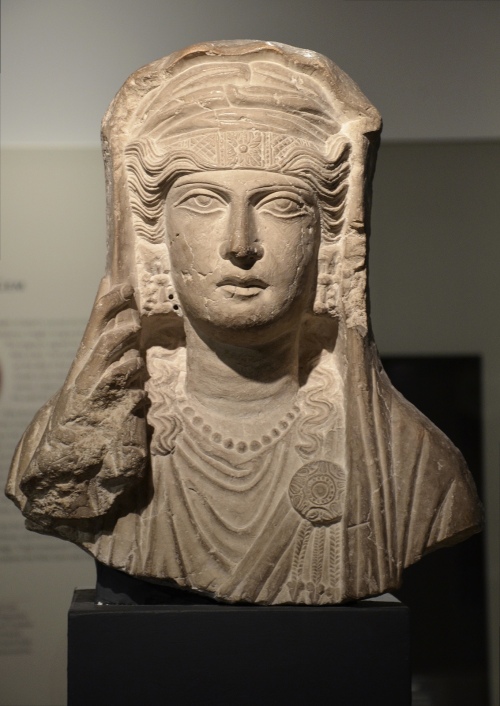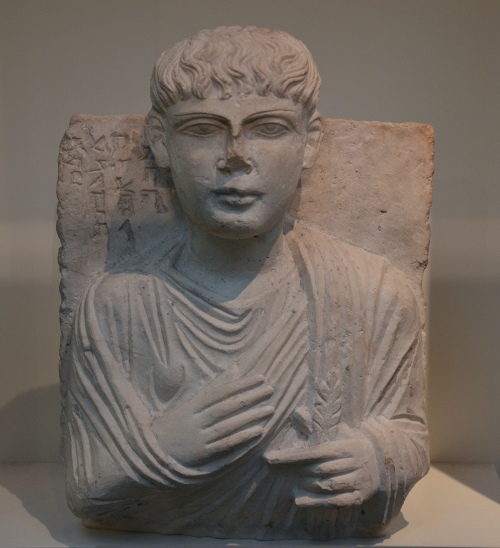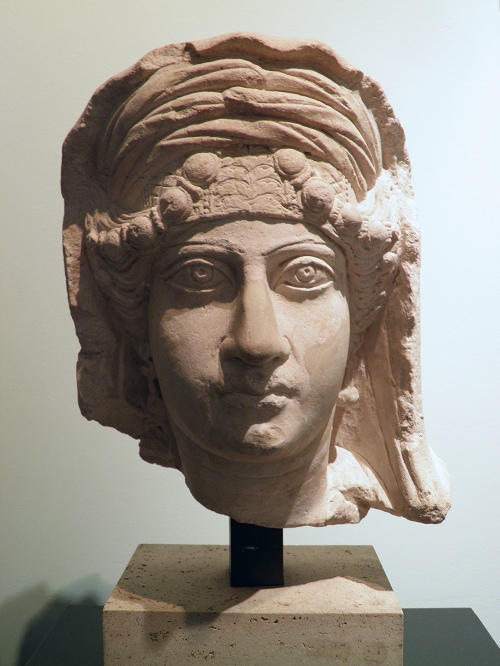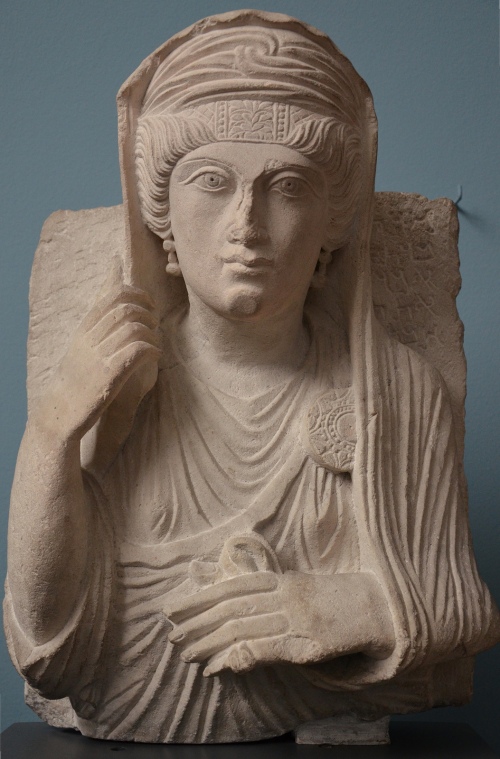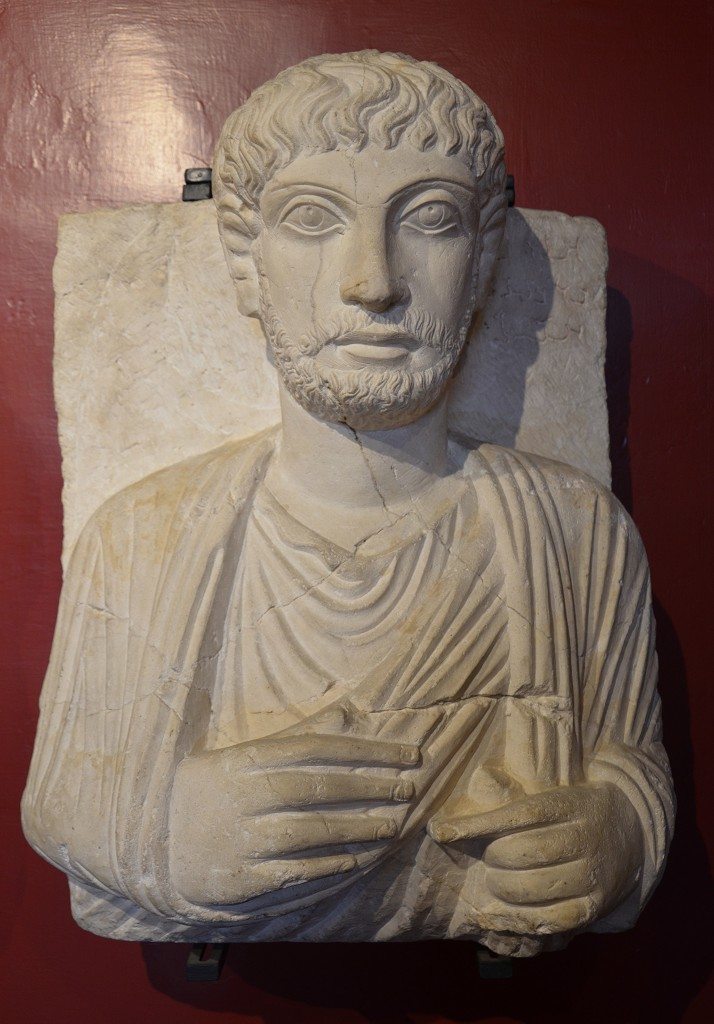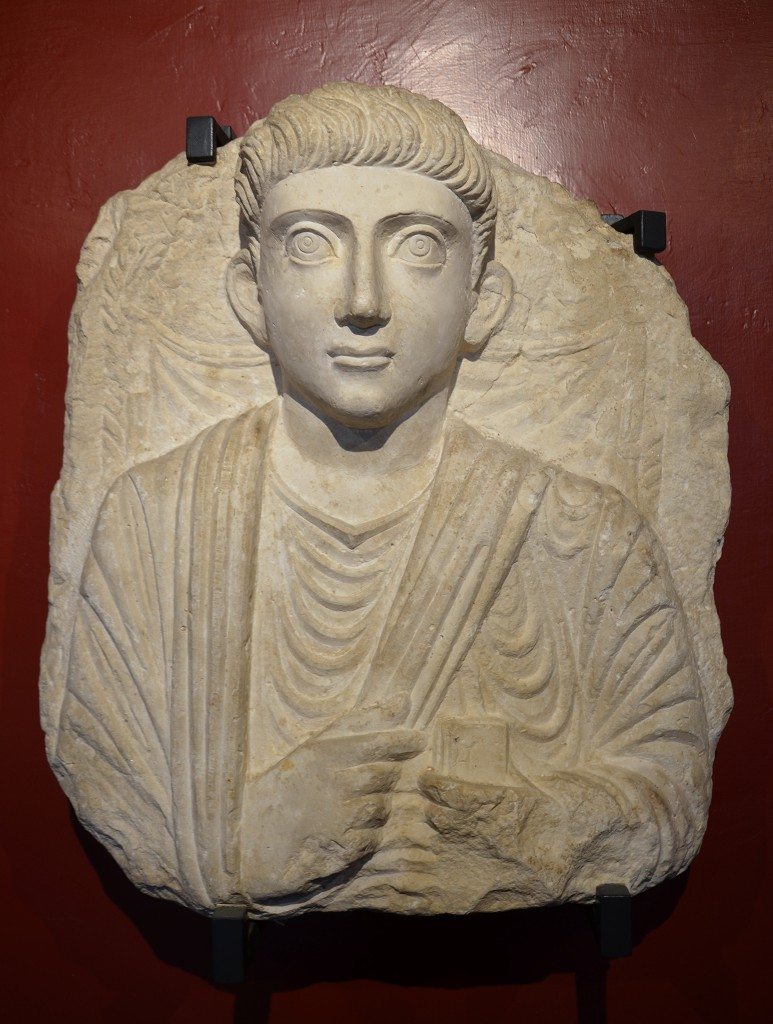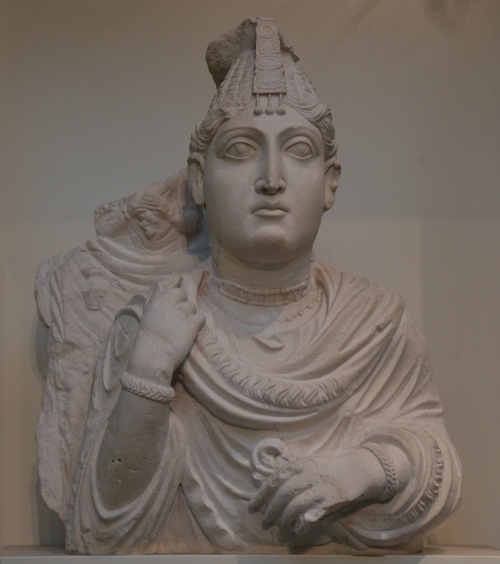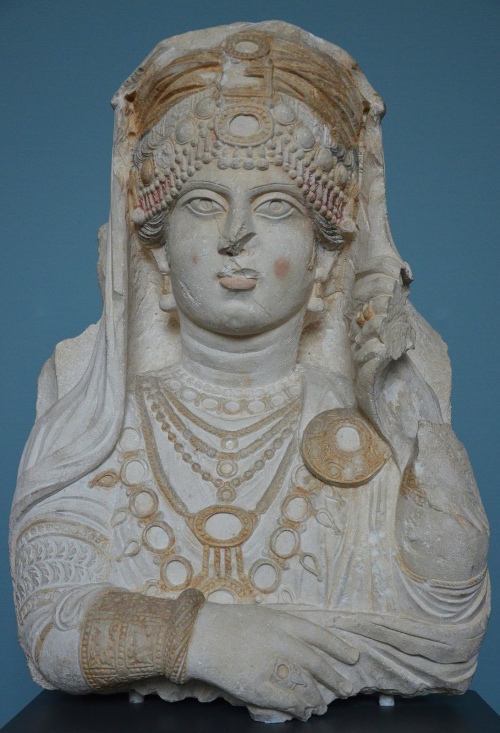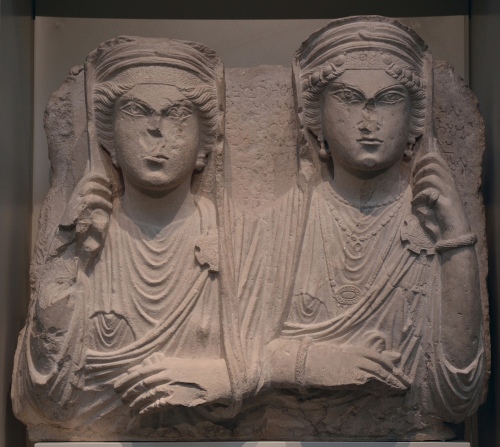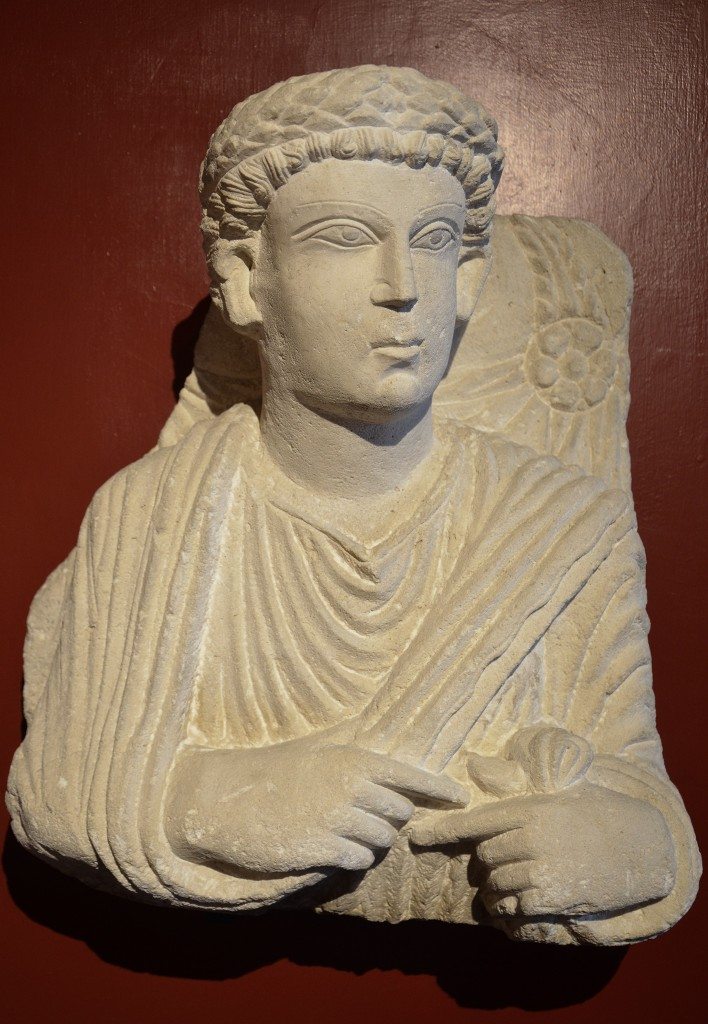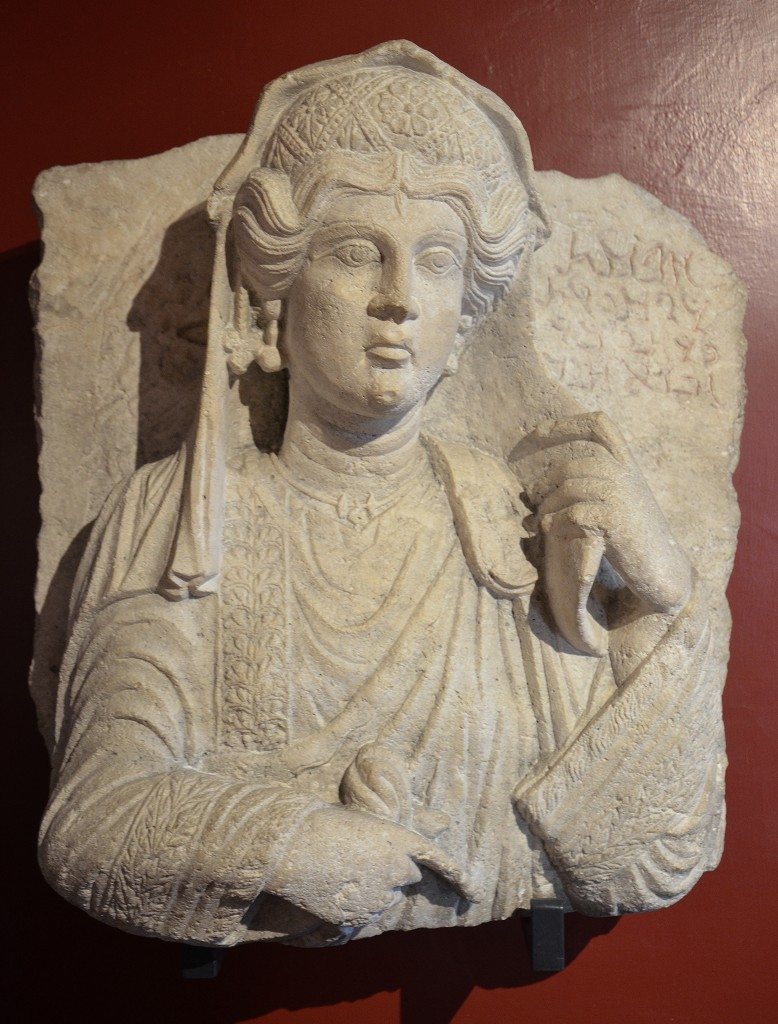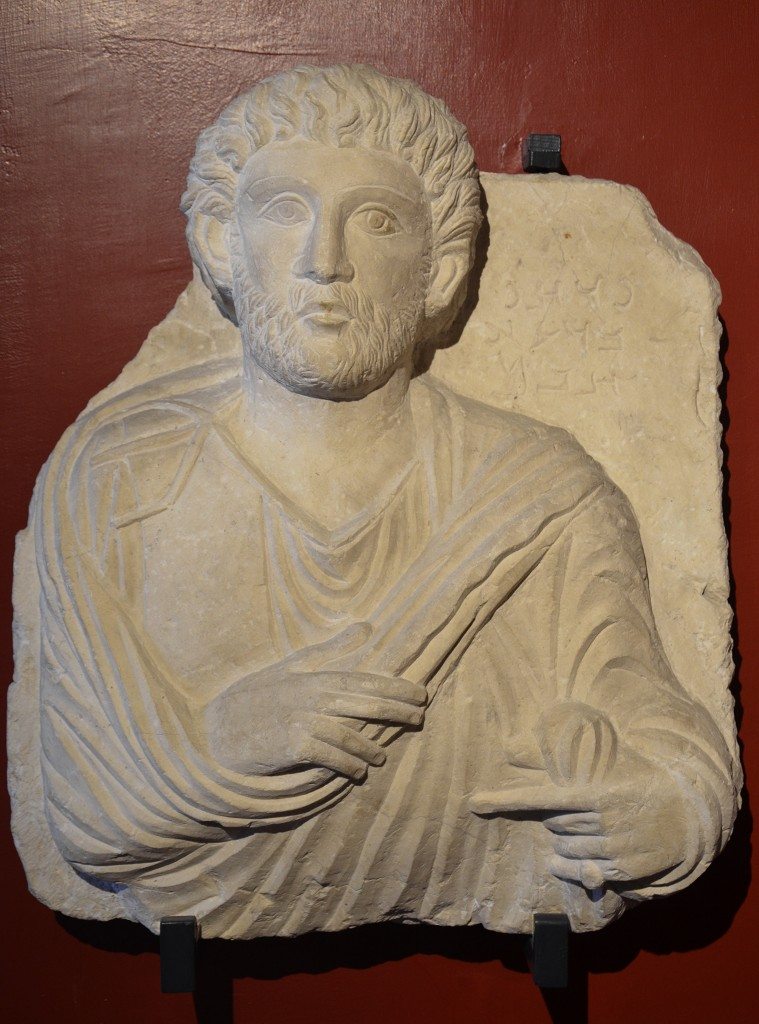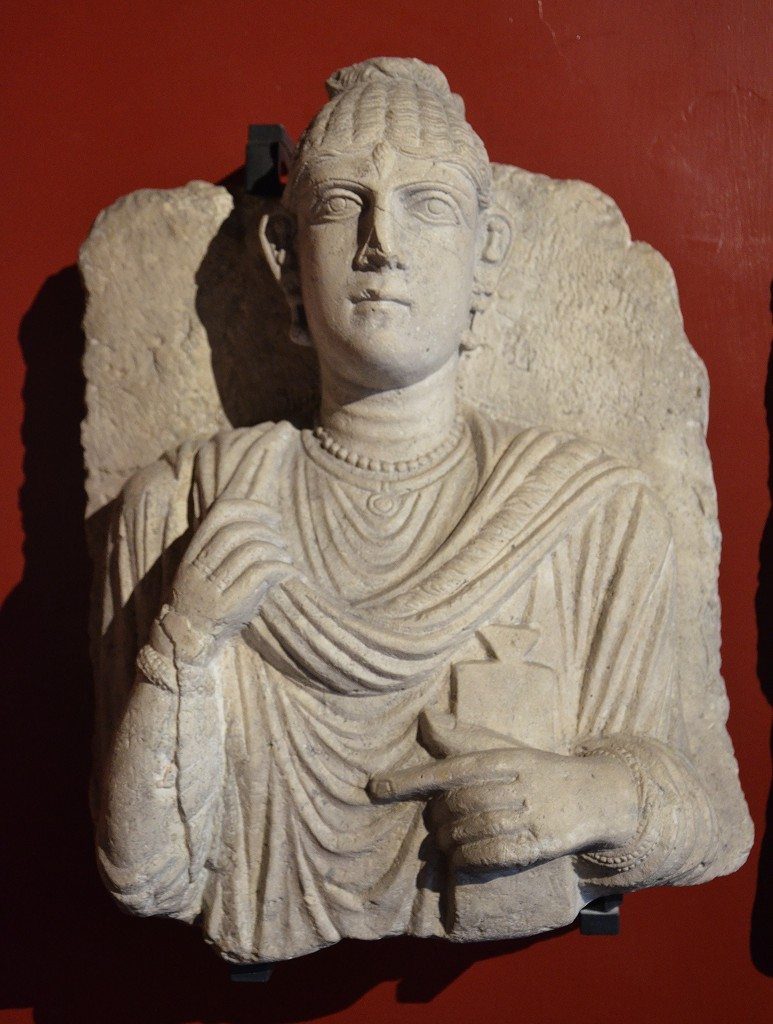The recent developments in the Middle East have drawn the attention of the world to the magnificent ruins of the ancient city of Palmyra. Its impressive remains were brought to light by travellers, first in 1678, and by archaeologists in more recent times. Equally impressive are the numerous representations of the inhabitants of the city in the form of funerary sculptures in the distinctive Palmyrene style.
From the 1st century BC the city grew in both wealth and population with the name Palmyra (city of palms) coming to replace the older Tadmor. It flourished as a caravan oasis on the trade route linking the Mediterranean with the West and Central Asia (the Silk Road). It was incorporated into the Roman Empire in the early years of Tiberius’ reign and became a metropolis with “free” status (civitas libera) under Hadrian, who visited the city in 129 AD and renamed it “Hadriana Palmyra”. Caracalla declared Palmyra a Roman colony in 212 AD and exempted the city from paying taxes on luxury items.
Many members of Palmyra’s prosperous merchant class commissioned funerary busts depicting fashionably dressed individuals and family groups. These stone faces, representing Palmyrenes who lived between 50 AD and 270 AD, came from tombs outside the city in the so-called Valley of the Tombs. Their fashion were Syrian but they were shown in a Greco-Roman style with Parthian elements. Tombs built for wealthy citizens took the form of towers of several storeys rising more than 20 m high, single-storey temple or house tombs, or underground rock-cut tombs called hypogea. They were richly decorated with wall paintings and each tomb contained several chambers (cubicula). Each cubiculum had funerary portraits with a brief dedicatory inscription (often in Aramaic and Greek) carved on limestone slabs that sealed the niches (loculi) in which the mummified bodies of the deceased were laid to rest. Palmyrenes called their tombs “houses of eternity” and took great pride in their construction. Altogether, about 300 funerary monuments have been discovered in Palmyra.
Palmyrenes were portrayed wearing elaborate clothing, jewellery and accessories with accompanying inscriptional genealogies to honor their deceased ancestors. The men wore a chiton (tunic) and himation (cloak) of linen or wool. The cloak was usually draped so as to provide a support for the right hand. The women also wore a long tunic over which a cloak was draped. The cloak was held by a fibula (brooch) on the left shoulder, and over it all a long veil covering the head, shoulders and arms. They wore jewelry such as ornate necklaces, rings, and earrings.
Palmyran funerary sculpture is the largest corpus of portrait sculpture in the Roman world outside Rome. Today, more than 1500 funerary portraits are scattered through many museums and private collections across the world. Here is a small collection of these portraits I have collected during visits to various museums.
Besides portrait busts in relief, Palmyrene tombs might have also contained portrait statues. Very few have been recovered from the city and whether they were funerary elements or honorific statues is not known.

Limestone funerary portrait of a Palmyrene priest (identified by his cylindrical hat -modius-), c. 190-200 AD Ny Carlsberg Glyptotek, Copenhagen
Bibliography and links:
- Smith II, Andrew M (2013). Roman Palmyra: Identity, Community, and State Formation
- Malcolm A. R. Colledge, The Art of Palmyra, London, 1976
- Andrade, Nathanael J. (2013). Syrian Identity in the Greco-Roman World
- A. Henning,The tower tombs of Palmyra: chronology, architecture and decoration,
Studia Palmyreńskie 12, 2013 (pdf).
-
Palmyrene Funerary Sculptures at Penn by Michael Danti, 2011 (pdf)
-
The Palmyra Portrait Project by Andreas J. M. Kropp and Rubina Raja, Syria 91 (2014) p. 393-408 (pdf)



